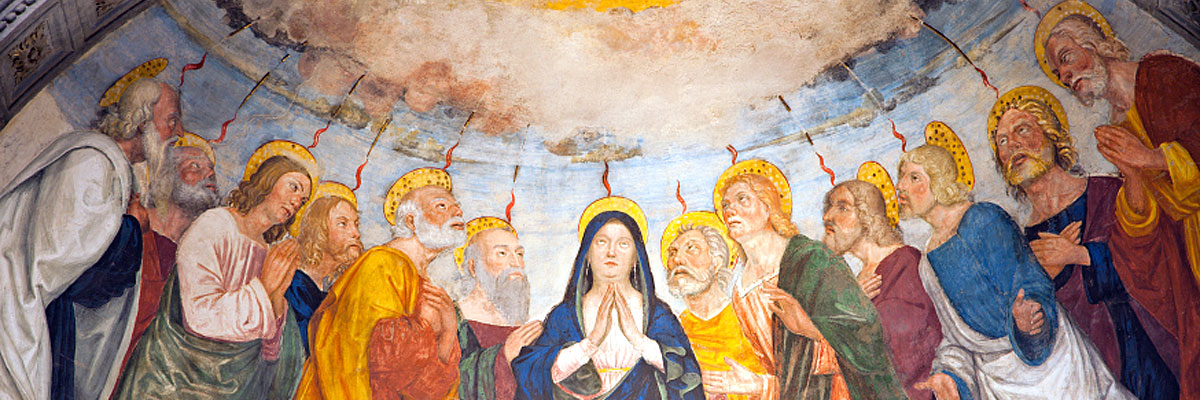
Understanding Our Church
A Treasury of Arkansas Writers Discussing the Catholic Faith
Official Website of the
Catholic Diocese of Little Rock
Finding meaning for religious symbols deepens love, joy of Christian living
Published: August 10, 2019
By Edward C. Dodge
Catholic High School for Boys
The Catechism of the Catholic Church teaches that “genuine sacred art draws man to adoration, to prayer and to the love of God, creator and savior, the Holy One and sanctifier.” (No. 2502)
Sometimes the lesson is obvious, such as an image of the Blessed Virgin pointing to Jesus while stepping on a serpent. But sometimes the meaning of the images or words requires more effort to understand. I think that effort pays off, leading us to think more deeply about our faith, to learn more about it and to experience delight when the idea clicks.
The "Agnus Dei," or Lamb of God, provides a good example of multiple levels of meaning. John the Baptist named Jesus “God’s Lamb,” the innocent to be sacrificed for our sins, as in Passover and Yom Kippur. You may have seen a lamb atop a book with seven seals or ribbons, which references Revelation’s proclamation that he alone can break the scrolls and read the words within. But why seven? Biblically, seven and 10 both suggest perfection — days of the week and commandments. Now consider the meaning of Jesus’s injunction to forgive seven times 70.
Next time you run across a Christian image or series of letters, take some time to Google the meaning. Your delight will result in evangelization as you share what you learned, deepening love and the simple joy of Christian living.
A more esoteric image is the pelican, especially with its beak planted against its breast. Like all birds, the pelican chews and regurgitates food for its young. But some people, seeing gore on its breast, imagined that the pelican must have been unable to find food, and so chose to wound itself to feed its young, just as our God feeds us with his own body and blood.
Since St. Joseph likely died with Jesus and Mary nearby, he is the patron saint of the “happy death.” Next to Joseph you will often find images of white lilies, representing purity and calling to mind a pious legend that a lily spontaneously sprouted from his staff as a sign that God wanted him to be Mary’s husband.
At St. Edward Church in Little Rock, you’ll find next to the statue of Joseph an image of deer near a fountain, a reference to Psalm 42. It’s neighboring image completes the story: a purple stole, an urn for oil and a candle. These items are used in the anointing of the sick, popularly known as the last rites: the sacrament that strengthens us for our final journey to Christ, who is the living water for whom we, the deer, yearn.
You might also see letters painted on walls. We recognize, for example, BVM for the Blessed Virgin Mary. But what of IHS? These are the first three letters of the Greek spelling of Jesus: IHΣΟΥΣ, the S our Latin equivalent to the Greek sigma. We have added other meanings to the abbreviation, from the lofty allusion to Constantine’s vision of a Chi-Rho in the sky and the spoken words In hoc signo vinces, “In this sign, you will conquer,” to the more every day rendering of “In His Service.”
The Chi (X) and Rho (P) are the first two letters of Christ in Greek, often drawn as one character, the P superimposed over the X. Christians have historically placed the Chi-Rho with the Greek alphabet’s first and final letters, alpha and omega (α, Ω) on their tombstones: Christ is Lord, the Beginning and the End.
Finally, there’s the ubiquitous “Jesus fish.” Early Christians may have used the image, drawing one side of it at a time, as a kind of secret handshake. The Greek word for “fish,” “icthys,” provides an acronym proclaiming the Gospel: Jesus (i) Christ (c), God’s (th) Son (y), Savior (s).
Next time you run across a Christian image or series of letters (like the St. Benedict medal), take some time to Google the meaning. Your delight will result in evangelization as you share what you learned, deepening love and the simple joy of Christian living.



